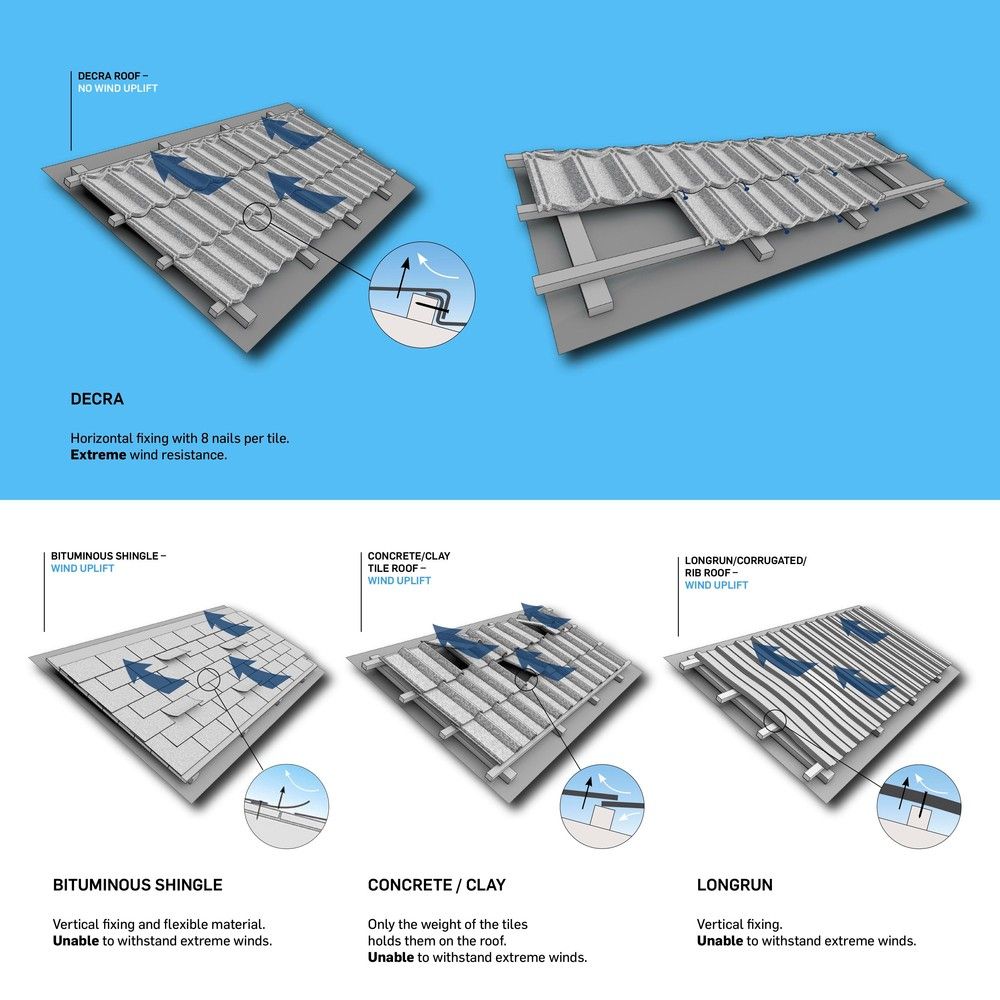
Did you know that in the US the heaviest architectural shingles are typically rated for wind resistance up to just 90-180 km/h? Clay tiles and wood shakes are so prone to wind damage that they aren’t rated at all, and even fibre cement products are only rated up to 120 km/h.
Can anything perform better than those conventional roof tiles?

Decra® stone-coated steel is unsurpassed for durability. Unparalleled impact resistance against hail penetration and a wind warranty for up to nearly 200 km/h. They do not need to be heavy to provide that exceptional protection. Decra® feather light and super strong steel roof tiles will not burden your house with a heavy roof structure nor your budget with extra costs that come with a heavy roof.
What is the secret sauce behind DECRA’s super strong protection? It has 3 ingredients:
A. THE STRENGTH OF STEEL
On 8th June 2018 a hailstorm with extremely huge hailstones 10 cm in diameter hit the southeast region of Slovenia. Most devastated was the municipality of Črnomelj where the roofs of over 1700 private houses and non-residential buildings were destroyed. Stone coated metal roofs proved to be hail resistant. Despite the extreme size of the hailstones, the steel roofs remained waterproof. This was not the case with conventional roofs such as clay or concrete, which were broken and whole roofs had to be replaced.
Due to climate change, extreme weather is becoming more common in Europe. High winds and large hail stones can challenge conventional roofs and you will need a special roof to ensure the safety and longevity of your house.
B. THE CORROSION RESISTANT ZM250 ALLOY
It sounds obvious that a steel roof would provide better protection against hail than a clay or concrete roof, but you may be wondering
How can a steel roof cope with a double attack from extreme elements
and rust at the same time?
After long years of experimentation and innovation, a winning combination has come out on top and made the Decra® roof virtually corrosion resistant. A special alloy makes Decra® practically unbeatable: corrosion resistant ZM250, which is protected on both sides with zinc-aluminium-magnesium alloy. It has proven to be an effective shield in the battle against rust.
Decra’s strong steel roofing solution is a force to be reckoned with in the roofing industry and is probably the best protection for your home at such times as these.
C. THE HURRICANE PROOF FASTENING TECHNIQUE
What is the best defender against high winds? Most conventional roof tiles are fastened vertically. But a practice is not necessarily the best just because it has been preferred by many for a long time. We at Decra® have challenged this practice and discovered that there is a better roof fastening technique: horizontal fastening.
Why does horizontal fastening provide better protection against the elements?
The stronger the wind, the higher the pressure differential and this results in “wind uplift” perpendicular to the roof. This “wind uplift” is the primary cause of failure in roofs with
vertical fastening, where the fastener simply pulls out. With the horizontal fastening method used for Decra® roofs, the fasteners must shear off for the roof to fail, an unlikely event given there are eight or more fasteners holding down each tile.
HORIZONTAL FASTENING + 8 NAILS PER METAL TILE = HURRICANE & HAIL PROOF ROOF